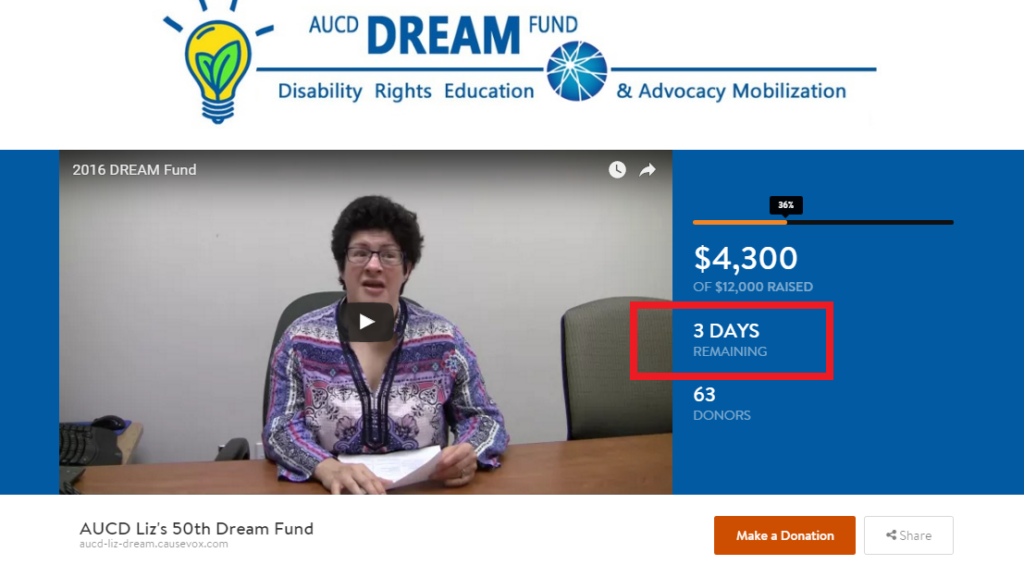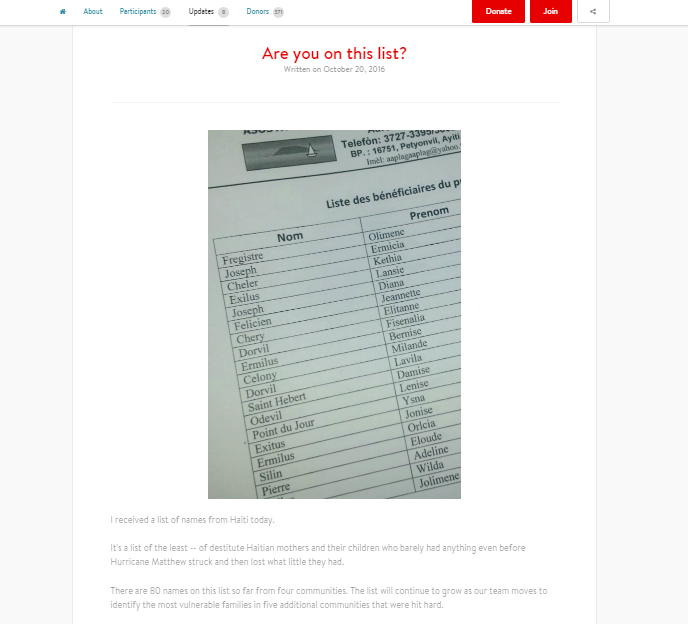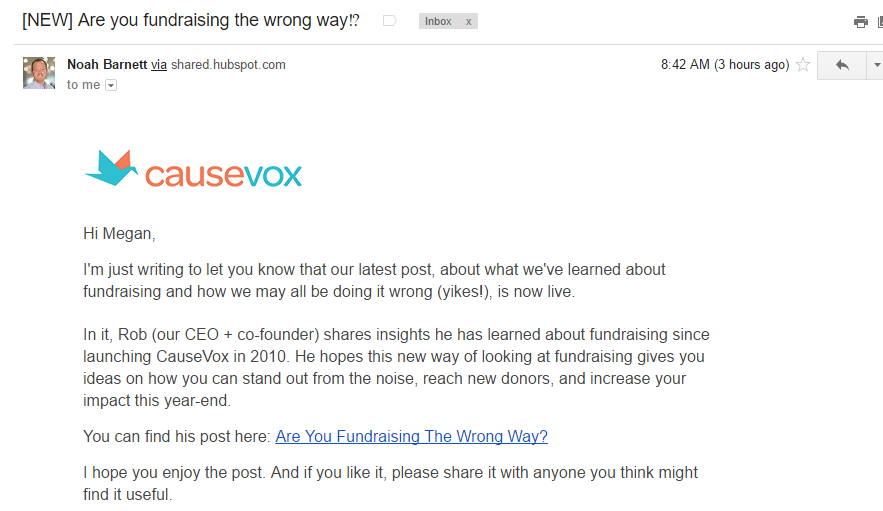Imagine a supporter looking at your fundraising appeal. Is she immediately compelled to take action? If not, you’ve got to make your content more compelling. With your 2017 fundraisers starting soon, there’s no time to waste!
See what I did there?
I could have started this post with something like: “Compelling content makes the difference between whether your fundraising appeal is skipped over or considered. Your content should be more than interesting, it should make people want to do things. There are some best practices for making your content compelling, which I’ll explore now.”
“Imagine a supporter looking at your fundraising appeal. Is she immediately compelled to take action?” tweet this
But then you probably wouldn’t still be reading.
Compelling The Brain To Action
Our brains are fascinating things. A lot of what drives us isn’t exactly conscious. Some things make us take action more than others, which we call “hot triggers.” Appealing to these triggers is “neuromarketing,” marketing to the brain.
When someone receives your fundraising appeal, online or in-person, they are making a lot of decisions very quickly. Will they open it? Will they read the whole thing? Will they make a gift? Will they make a gift right now, or wait?
Making your content compelling makes it more likely your appeals will be opened, read, and responded to. Compelling content is also more shareable and memorable, both important factors in the year-end season, when your supporters are getting bombarded with messages from nonprofits.
“Making your content compelling makes it more likely your appeals will be opened, read, and responded to.” tweet this
Hold Up.“Marketing To The Brain Sounds Creepy!”
Okay, I’ll admit that attempting to trigger a response in other people’s brains seems a little like mad science.
It’s not. If you were hoping for some kind of donation-inspiring mind control device (and really, who isn’t?) I’m sorry to tell you that neuromarketing isn’t it.

Appealing to hot triggers doesn’t trick anybody, or make them do something they don’t want to do. It just inspires action better than other things–it doesn’t make the action happen. There’s nothing sneaky going on.
What neuromarketing does do is make a quicker response more likely. It short-circuits procrastination. This is useful, because “Oh, yeah, I’ll make a donation later tonight/over the weekend/in the vague future” is the enemy of all fundraising appeals. Despite donors great intentions, a donation delayed is often no donation at all.
Secrets To Compelling Content
So what are these triggers that brains love so much?
Stories That Show Impact
At CauseVox, we keep talking about storytelling because we believe it’s the heart of fundraising. Telling stories that demonstrate your impact is more engaging than anything else. Stories activate more of the brain, promote better recall, and unleash empathy.
CauseVox is an online fundraising tool that is centered around people and fueled by storytelling. To get the most out of a story, it should be emotional, with a central character, and show a change.
Change for Kids tells a story of change, empowerment, and excitement in elementary education. In their video below, students and adults who’ve experienced their programs tell their own stories. I dare you not to tear up when the kids talk about how they used to feel reading in front of the class or trying to do math, and how they feel now. The impact is clear, my emotions are engaged, and my brain is paying attention.
Urgency
You need a good reason why things need to happen now. The urgency trigger is why we recommend keeping your online fundraising campaign fairly short. If people feel like they have a long time to decide to donate, they will keep putting it off.

To hit that urgency trigger in your content, make sure you:
- Emphasize any and all deadlines: “7 days left to make a difference!” “There are only three days left in December!”
- Use words like “now,” “today,” and “too late.”
Simplicity
The following may be painful if you are a writer:
You probably don’t need all that content that you have. In fact, it may be working against you. Usually, a shorter message will do the job better. All you need is to show the problem, explain the solution, and call the reader to action. You can do that in three sentences.
Take a look at Neverthirst’s video below. In 30 seconds they show a problem (lack of clean water access), show the solution, and invite the viewer to join the cause.
Doubtless, there is enough information about clean water access to fill pages and pages, and make full-length documentaries–but those wouldn’t compel action as much as that 30 second video.
Our brains are wired for novelty. We’re always looking for something new. That means attention is hard to sustain. A long, complicated fundraising pitch does not deliver the novelty we seek.
This is particularly true online, where readers seriously skim. It’s why good fundraising videos are short, and why we don’t encourage you to stuff your CauseVox fundraising platform with text.
For maximum simplicity:
- Don’t write too much content in the first place
- Set a strict time limit for videos
- Always ask, “Could I do this with fewer words?” when you review your content
Personal Appeal
Dale Carnegie famously said that “a person’s name is to that person the sweetest and most important sound in any language.” It makes sense that we’d be looking for information to see if whatever we’re reading is about us. The magic word that triggers us to say, “Aha! This is for ME!” is “you.”
Imagine you are walking down the street, and someone has fallen on the sidewalk. Which is more powerful, if the person says, “Help!” to no one in particular, or looks right at you and asks, “Will you help me?” Now, you could help them without being asked (just like you could receive an unsolicited donation), or respond to a general call (some people will give without a personal appeal), but the most powerful thing is the direct “you.”
The great thing about “you” for compelling copy is that conveys a personal appeal, even when you’ve created something for a mass audience. In your emails and letters, you can use people’s names, and you definitely should. But since creating a personal fundraising video or online campaign appeal is not feasible, “you” creates a similar effect.
Take a look at Beyond Borders blog post about Hurricane Matthew. It makes a personal appeal immediately in the title, asking, “Are you on this list?” We immediately imagine ourselves in the situation of the people who need help.

To unlock the personal trigger in your content:
- Use “you” as much as possible, and much, much, more than “we” or “I.”
- Address the reader by name whenever possible. Banish “Dear Generous Donor” and “Dear Friend” from your fundraising vocabulary.
Ask The Brain To Do Some Of The Work
People will keep reading your content if there’s something for them to do. A thinking activity is more interesting than just absorbing information. Encourage engagement with your content by:
- Activating the Imagination–I’ve asked you to imagine specific things a couple of times in this post, and that’s not an accident. Activating the imagination asks your brain to create something, rather than just understand something.
- Asking Questions–When we’re asked a question, we immediately try to answer it, forming a personal connection with the information.

A Quick Recap, If You Weren’t Compelled To Read This Whole Post
As you take a look at your nonprofit’s content, ask yourself the following questions:
- What’s the story? Does it show an impact?
- Why do I have to do something now instead of later?
- Have I outlined the problem, solution, and call-to-action clearly and briefly? Could it be briefer?
- Does this content appeal to the reader personally?
- Have I done anything to engage the brain, like solicited imagination or asked a question?
What could you do right now to make your content more compelling?
“What could you do right now to make your content more compelling?” tweet this
For More On Compelling Content, Check Out:
Neuromarketing For Crowdfunding and Online Fundraising
How To Write A Fundraising Appeal For Nonprofit Crowdfunding




